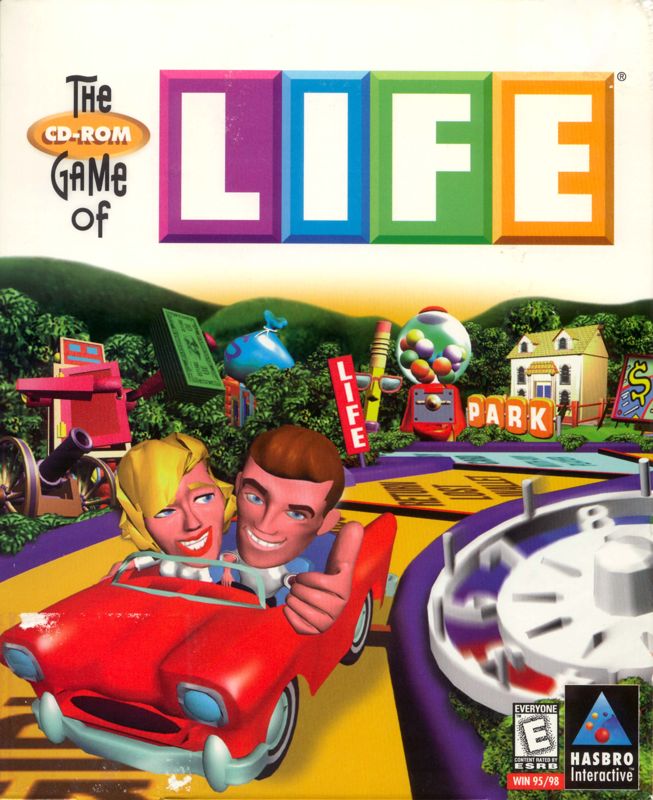Retro Replay Review
Gameplay
The Game of Life on PC remains faithful to its board game roots while introducing a host of digital conveniences. Players can choose between the Classic mode, which mirrors the traditional board setup, and the Enhanced mode, featuring additional events and mini-games that add unexpected twists to each turn. The core mechanics revolve around spinning the virtual spinner, making pivotal life decisions—such as selecting a career path, investing in the stock market, or choosing to start a family—and reacting to chance events that can dramatically alter your wealth and status.
(HEY YOU!! We hope you enjoy! We try not to run ads. So basically, this is a very expensive hobby running this site. Please consider joining us for updates, forums, and more. Network w/ us to make some cash or friends while retro gaming, and you can win some free retro games for posting. Okay, carry on 👍)
One of the standout features is the variety of life events that occur as you traverse the board. From sudden windfalls and job promotions to unexpected medical bills and family expansions, each spin offers fresh excitement. The Enhanced version spices things up with interactive mini-games—like a quick memory challenge or a timely reflex test—that can earn you extra cash or dodge potential pitfalls. This layer of interactivity keeps players on their toes, preventing the experience from feeling too predictable.
Multiplayer support further elevates the gameplay. The Game of Life accommodates up to six players, either locally on the same machine, over a local network, or via the internet. The online matchmaking is straightforward, with options for private lobbies and public games. Whether you’re out to cooperate with friends or mercilessly exact revenge—landing on someone else’s tile and sending them back to college—you’ll find the social aspect incredibly engaging. Automated turn timers help keep games moving at a brisk pace, ensuring that no player drifts too far behind.
Graphics
Graphically, The Game of Life is a colorful and charming adaptation of the beloved board game. The board itself retains its iconic pastel palette and winding path, but is given new life with subtle animations—spin the wheel and watch the numbers whirl, or see your car icon bounce down the road to your chosen destination. Background elements, such as passing scenery and event pop-ups, are rendered in a clean, cartoon-style that’s easy on the eyes and evokes the playful spirit of the original cardboard version.
The Enhanced edition introduces additional visual flourishes, such as animated mini-game sequences and richer event illustrations. For example, landing on a “tax day” space prompts an amusing cutscene of you anxiously opening bills, while hitting the jackpot in a mini-game rewards you with a celebratory confetti shower. These touches of personality go a long way in making each session feel unique and memorable, particularly for players accustomed to static board game graphics.
While the transition to PC means you won’t be sliding plastic pegs into holes or handling physical cards, the intuitive user interface compensates by making game management seamless. Menus are clearly labeled, on-screen prompts guide you through decision points, and tooltips clarify the implications of each choice. Whether you’re a seasoned PC gamer or a newcomer to digital board games, the graphical presentation is both accessible and aesthetically pleasing.
Story
Though The Game of Life doesn’t feature a traditional linear storyline, it weaves an emergent narrative through its life event system. Each playthrough unfolds as a unique life journey: you might begin as a humble high school graduate taking on student debt, only to pivot into high finance, marrying your sweetheart and raising children along the way. The collection of choices and random events forms a personalized tale that players can reminisce about long after the board is cleared.
The Enhanced version deepens this narrative potential by offering themed event packs—such as “Adventure Travel” or “Tech Startup”—which introduce story-driven challenges and rewards. Opting into these packs creates a semi-coherent storyline: you could, for instance, backpack around Europe, gain cultural trip experiences, and return home with opportunities to monetize your newfound skills. These episodic arcs add flavor and replay value, turning each game into a mini-adventure of its own.
Moreover, the multiplayer dynamic fosters shared storytelling. Friendly banter, in-game rivalries, and surprise turnarounds (like bankrupting an opponent at the last minute) produce memorable moments that players recount later. While there is no singular narrative path, the accumulation of life events, mini-games, and interactions builds a communal storybook of triumphs and near-misses, which is the true heart of The Game of Life experience.
Overall Experience
Overall, The Game of Life on PC successfully bridges the gap between classic board game nostalgia and modern digital convenience. The faithful recreation of the original rules, combined with enhanced modes and engaging mini-games, makes it appealing to both longtime fans and newcomers. The multiplayer options—local, LAN, or online—ensure that you can enjoy the game with friends and family, regardless of their physical location.
Replayability is a strong suit here, thanks to the variability introduced by random life events, different career and college tracks, and the modular Enhanced event packs. Even after numerous sessions, it’s rare to experience the exact same sequence of events, encouraging players to return for “just one more round.” The blend of strategy—deciding when to take risks or play conservatively—and luck-driven surprises keeps the tension alive throughout the game.
While purists who love the tactile feel of paper money and plastic pegs may miss the hands-on element, the digital version’s streamlined interface and automation of bookkeeping tasks allow you to focus on the fun. Whether you’re aiming to retire as a millionaire, meddling with opponents through creative revenge spaces, or simply enjoying the journey, The Game of Life delivers a well-rounded and engaging experience that’s well worth exploring.
 Retro Replay Retro Replay gaming reviews, news, emulation, geek stuff and more!
Retro Replay Retro Replay gaming reviews, news, emulation, geek stuff and more!




Reviews
There are no reviews yet.